Most people know that insects and other arthropods shed their “skin” to grow. Quite a lot of people have also noticed empty cicada “shells” at the base of trees, understanding that this was an example of a shed “skin.” But the flat statement that arthropods shed their skins as though that were something akin to taking off one’s clothes entirely misses the complexity and marvelousness of this phenomenon (called molting among us pros). The skin of reference is, of course, the animal’s exoskeleton, the structure that gives the body its shape as well as shielding it from the worst of environmental insults. Everything that you see on arthropods (as well as several “internal” structures that you don’t see) is exoskeleton. Let your mind roam over the myriad shapes that you have seen in insects, crustaceans and other arthropods, and you will understand what an amazing thing an exoskeleton is.
My Found Object for this essay is the molted exoskeleton (or cuticle) of a small horseshoe crab that I found on the shore of St. Joe Bay in Florida. In every detail (except size), this molted cuticle looks exactly like the horseshoe crab that shed it and moved on with its life, because the molt is actually the entire outside of the crab. Of course, the crab, if still alive, has probably grown and molted a lot in the 25 years since I collected its molt. Molting is part of the life cycle of all arthropods, and while in many, the shed cuticle is thin and crumpled, in horseshoe crabs it is thick, rigid, and tough, an attractive Found Object.
The tissue that produces this exoskeleton is the hypodermis, a layer of cells that forms the outer body surface (and some internal ones), and therefore is the interface with the environment. To protect its living cells from the insults of the environment, the hypodermis secretes a gummy mixture of proteins and chitin onto its own surface, then hardens this coating with tanning agents that make the secreted layer hard and tough. But how can an animal encased within a more-or-less non-expandable exoskeleton grow? The solution is molting--- at intervals, the animal sheds its exoskeleton and secretes a new, larger one. It then grows until that exoskeleton is again too small. Therefore, growth in weight is continuous, as it is in vertebrates, but growth in volume occurs in discrete steps through molting.
A step-by-step view of the molting process reveals a complexity that makes one wonder why it doesn’t go haywire more often. Between molts, the cells of the hypodermis are attached to the cuticle they secreted. When the size/weight of the animal has outgrown the cuticle, and it is time to molt, the hypodermis secretes enzymes that dissolve the glue binding the cells to the cuticle. This result in a small space between the old cuticle and the hypodermis. The freed hypodermis is initially the perfect negative of the cuticle, but it grows inside the old cuticle, becoming wrinkled and folded as its size increases. It then secretes a thin new cuticle on its outer surface, creating a perfect positive of the now larger hypodermis. With the living tissue protected, it then secretes enzymes into the molting space that begin to dissolve and resorb the inner layers of the old cuticle for reuse (the hardened outer layer is not digestible). In this way, the living hypodermis is never exposed directly to the environment. Most living things have evolved ways of preventing such direct contact, from the bark of trees to our skin of dead cells, to the slime coating of slugs and their ilk. Living cells and direct environmental contact do not mix well.
When only the outermost layer of the exoskeleton remains, it splits along predetermined weak lines and the animal withdraws its body to expose the sparkling new exoskeleton. Once the old exoskeleton has been shed, the soft, new one is expanded by swallowing water or air, and then hardened into the new, larger size. The location of the splitting lines varies across the arthropods. In many insects it is on the dorsal side of the head and thorax. In the horseshoe crab, it is along the horseshoe-shaped anterior margin, as seen in the ventral view below.
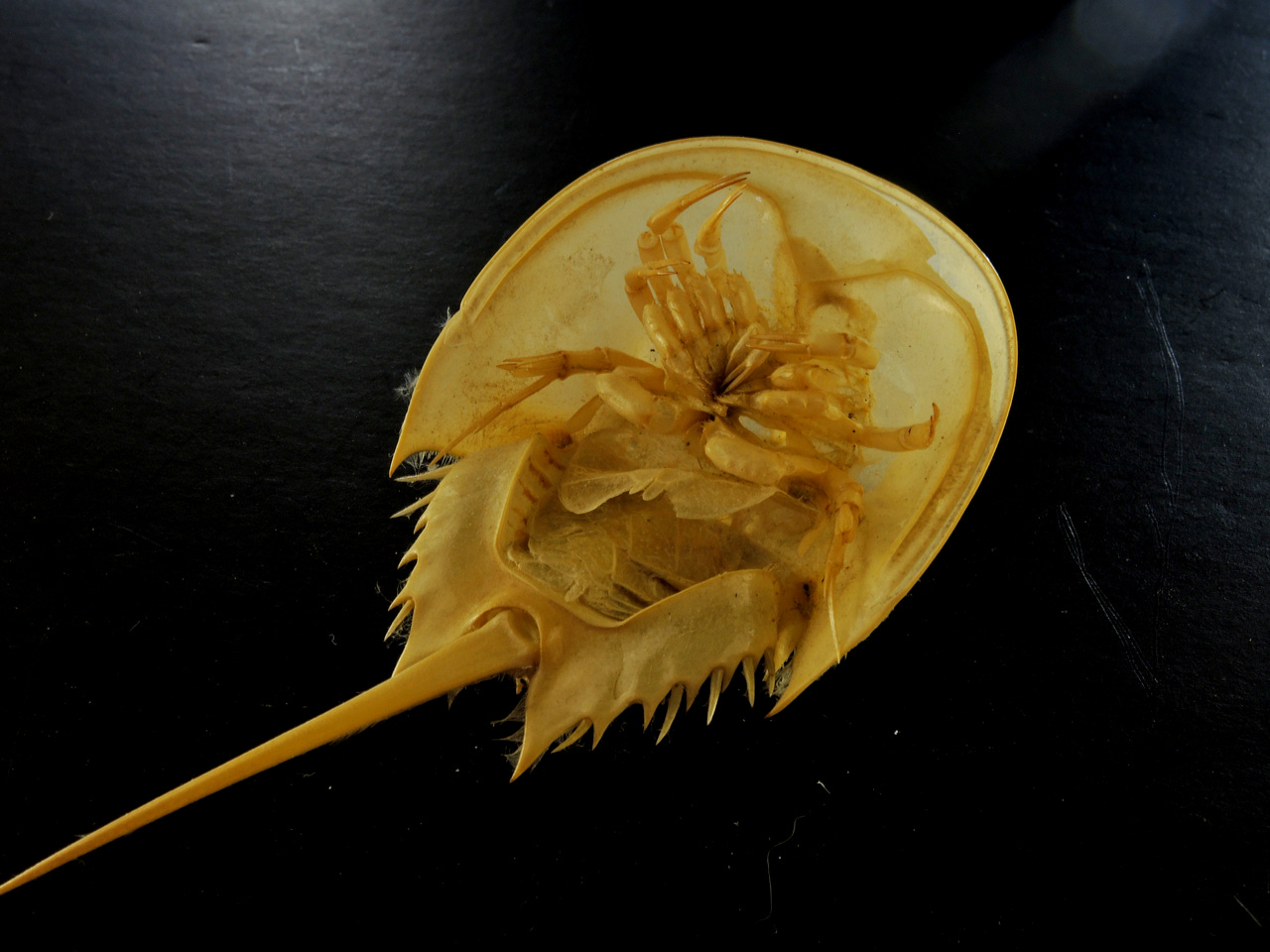
Because the entire surface of the animal is one continuous sheet of hypodermis, hardening the cuticle uniformly would imprison the animal in an inflexible box, unable to move. But since arthropods obviously move very well, how is the exoskeleton structured to accomplish this? The answer is an example of what might be called “virtuoso secretion.” The newly secreted cuticle is hardened in regions, but thin strips between the hardened regions remain membranous, soft, and pliable, forming movable joints or intersegmental membranes. Because arthropods seem to be made up of distinct plates and tubes, it is easy to overlook the continuous nature of the exoskeleton over both the rigid regions and the movable joints--- only the nature of the cuticle varies: rigid or flexible. These intersegmental membranes are often folded or telescoped so that they are not easily visible. In my essay on crab claws, I describe how the intersegmental membranes are an integral part of how the claws work. The image below shows two locations (circled) on a horseshoe crab appendage where the intersegmental membranes are visible.
Closer inspection reveals the astounding detail of molts. These are not a crumpled mess of discarded clothing on a bedroom floor. Every detail that was observable on the live animal is retained in the molt, from jointed appendages (that work!) and gills to fine bristles. How could it be otherwise if the entire outside of the animal is shed? The fine and coarse details can be seen below on the three closer views of my Found Object molt.
The arthropods are one of the most successful lines of evolution, contrasting so dramatically in body structure with that of the other successful line, the vertebrates. One of those contrasts is the internal bony skeleton of the vertebrates, and the external, secreted skeleton of the arthropods. What I like about arthropods is that every time they molt, they leave behind an artifact, and sometimes these artifacts are remarkable enough to be collected as Found Objects. The skeleton of vertebrates can also be collected as Found Objects (and I have collected many), but these bones are only revealed after the death of the animal and the decay of its flesh. If we were arthropods, we wouldn’t need photographs of ourselves as we grew up; we would simply keep and display our molts, and they would be a perfect record of how we looked through the years. How cool would that be?



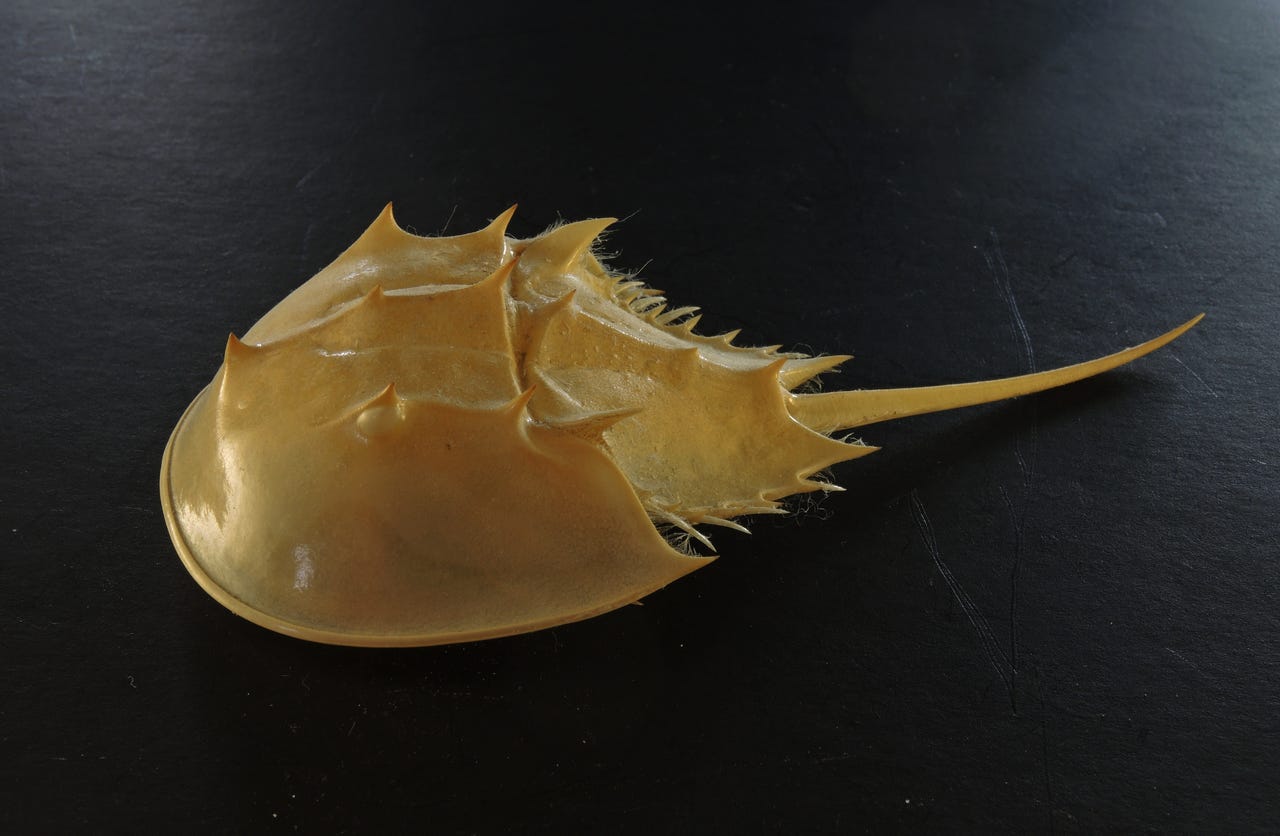
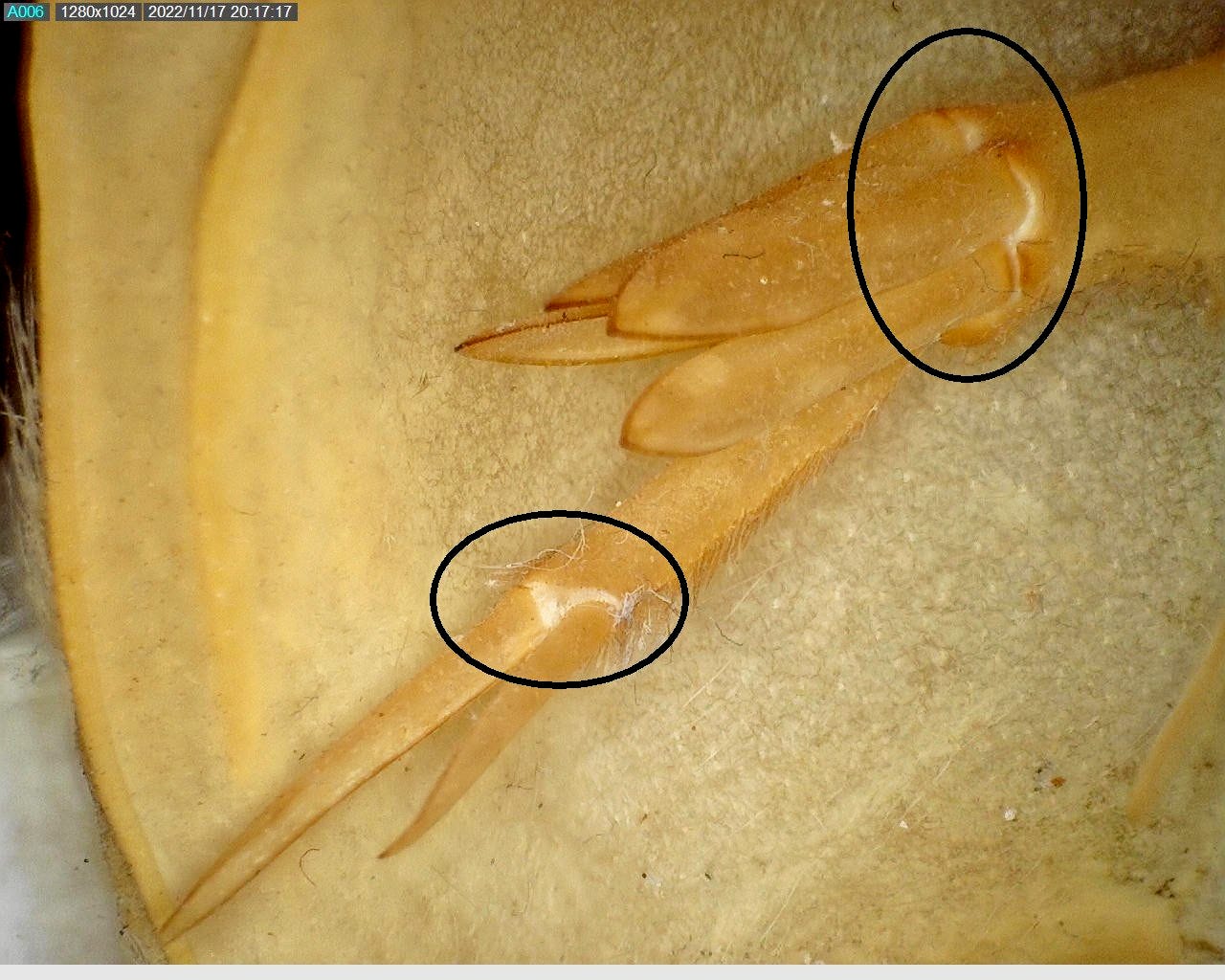
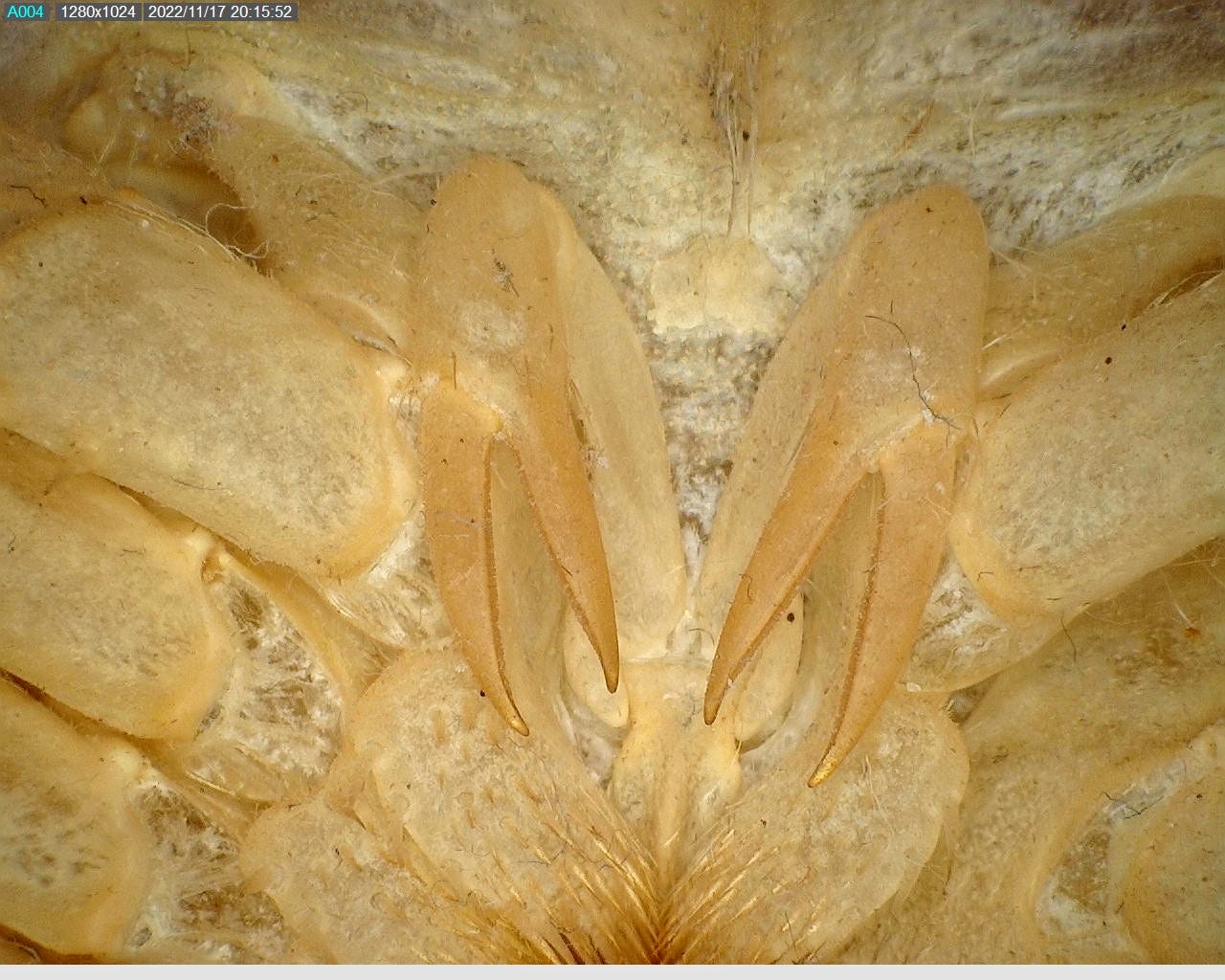
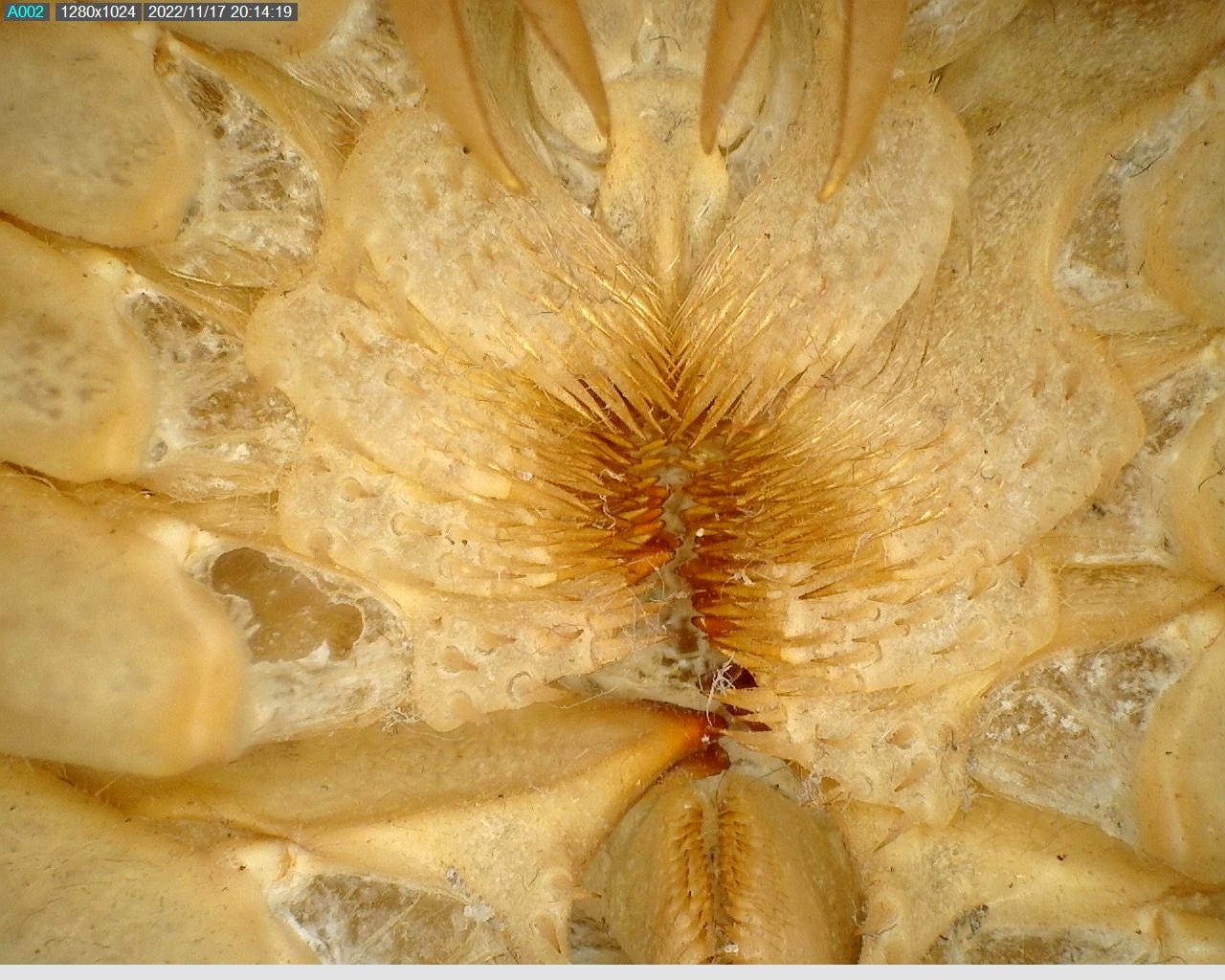

Thanks for shedding light on the marvels of shedding. The next time I peel shrimp, I'll look closer at the peel.
All of these essays are intriguing and edifying. The photos are wonderful illustrations of each topic. I am not any smarter after many months of these, but I am certainly delighted and a bit more awake to the marvels around us.